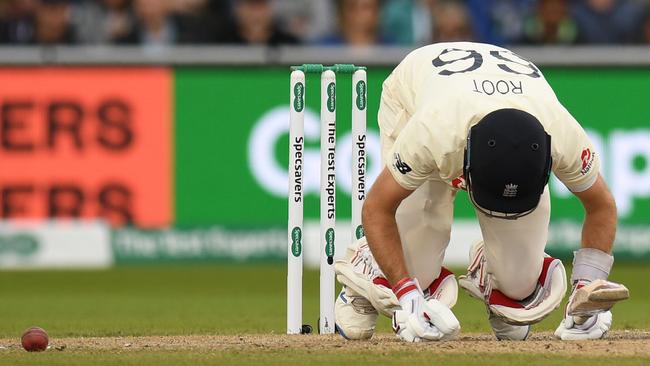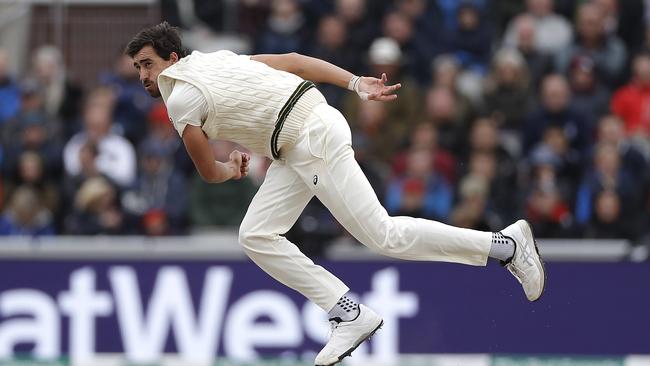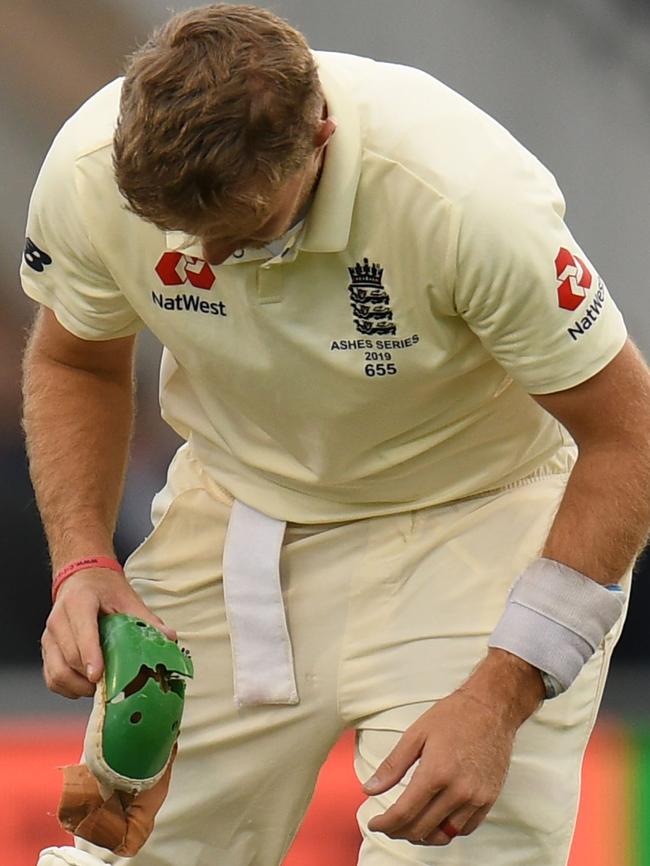Pat Cummins, Josh Hazlewood and Mitchell Starc finally reunited for Australia

Maybe; maybe not. One fancies Ben Stokes would have found a way to spoil the best laid plans, waylay the best organised combination. But in this first innings the pace trio have bowled together since the year’s first week, they’ve assuredly firmed Australia’s custody of the urn. At day’s end their bootprints were dark in the rain-softened turf, attesting their heavy tread. England was loitering a little palely, thankful for the dwindling light with only five overs to the second new ball.
From afar, it probably appears a little strange that the threesome were ever delinked. Blame the accountants, if you must. Patrick Cummins has carried on performing to his status as the world’s top ranked Test bowler, but partners have wavered. Against England in 2017-18, Starc and Hazlewood paid 24 and 25 for wickets respectively; against India in 2018-19, the costs blew out to 35 and 31.

There was no appreciable loss of pace, but there was a discernable lack of spark, and a degree of regimentation. Physical fatigue was advanced as an explanation; just as much a factor, one suspected, was the daily stress of having so few runs to bowl to, of knowing that a single prodigal spell could yield a crucial advantage.
The factor has come into Justin Langer’s thinking this summer. The Dukes ball being guaranteed to generate sufficient regular chances, he argues, economy becomes paramount. For much of summer, this formula has sufficed; then, suddenly, it did not, for one could no sooner have bowled dry to Ben Stokes than had a night of mocktails with George Best.
The slight change of strategy has been timely, coinciding with Australia’s second biggest first innings since January last year, affording more scope for attacking fields and venturesome speculations. With yesterday condensed into two extended sessions, the invitation was to press and to press again.

Starc, after his long, involuntary lay-off, may actually have gone at it too exuberantly. After four maidens, he grew a little wide to Rory Burns, a little too straight to Joe Root, releasing such hard-built pressure. The supersonic yorkers that some felt would have been so efficacious at Headingley were elusive — one was disposed of as a full toss. He did, all the same, achieve the day’s most expressive strike, cleaving apart Root’s protector. England’s captain extracted the item sheepishly — it resembled a shattered bird’s nest.
Burns restored England’s heart. He is a less idiosyncratic batsman than Steve Smith — who is more? — but there are resemblances in his rhythm and habit. His squint and squat stance is sui generis. He exhibits a geometer’s precision about his guard, a homemaker’s fussiness about his crease. His recuperative rituals on the leg side recall Robertson-Glasgow’s description of Phil Mead settling into the crease like a dog into its basket.
Once, with three men back to Hazlewood, he hooked aerially but fine, with a certain aplomb. Twice he suffered rearing deliveries from Cummins to strike his top hand as he bent backwards, after which he remained expressionless, betraying nothing. As in the first innings at Edgbaston, Root looked the more composed for a reliable companion.
YOURS! OH! 🤦â€â™‚ï¸
— Wide World of Sports (@wwos) September 6, 2019
Will Australia regret this?
WATCH: @Channel9 and @9Gem
STREAM: https://t.co/ARaHMPPTti #9WWOS #Ashes pic.twitter.com/6vlYwjwWnU
Australia, however, yielded little. The ground fielding was sharp. Willing hands ferried helmets busily from one end to the other, like an insurgency shifting camps. And either side of tea, Pat Cummins bowled nine overs for 19, racing in, and following through three-quarters of the way down the pitch. He hit the splice of Burns’ bat because it barred the way to the batsman’s throat. He hit Root’s back leg so hard that England’s captain had to remove his pad to restore circulation, a flinching glove, and a glancing edge, but it bisected an motionless keeper and slip: in truth it was Tim Paine’s to dive for, David Warner standing wide.
PLUMB! The key wicket as Hazlewood traps Root in front!
— Wide World of Sports (@wwos) September 6, 2019
WATCH: @Channel9 and @9Gem
STREAM: https://t.co/ARaHMPPTti #9WWOS #Ashes pic.twitter.com/bot66jqRRD
It was like a delayed concussion when Hazlewood succeeded Cummins at the Brian Statham End and struck thrice, beating Burns’ outside edge, Root’s inside edge and Jason Roy pointless in a spell of 6-2-17-3. The gap between Roy’s bat and pad was only slightly narrower than the Gulf of Carpentaria. Suddenly England were five wickets down and still almost 300 runs in arrears, and almost 100 from avoiding the follow on. The bowler with the greatest say to come, however, may be the slowest. Nathan Lyon has bowled twenty-five overs so far without reward, long-sufferingly accepting the ironic cheers for his backing up at the bowler’s end, but obtaining encouraging deviation. It would be the last link in the reunion if he were to prove decisive in the next two days.



It was to save their old orphanage that the Blue Brothers put the band back together. It was risk to the Ashes that has inspired Australia’s selectors along similar lines in this Fourth Test. Pat Cummins, Josh Hazlewood, Mitchell Starc: that’s 500 Test wickets right there. They’d have quelled that riot at Headingley, yes?